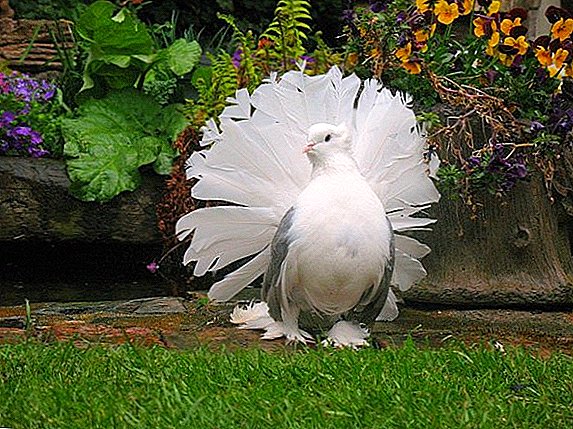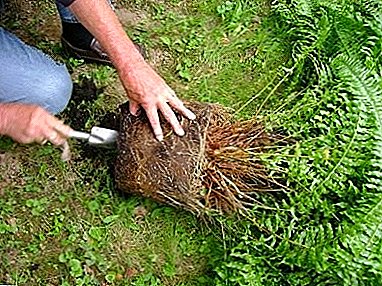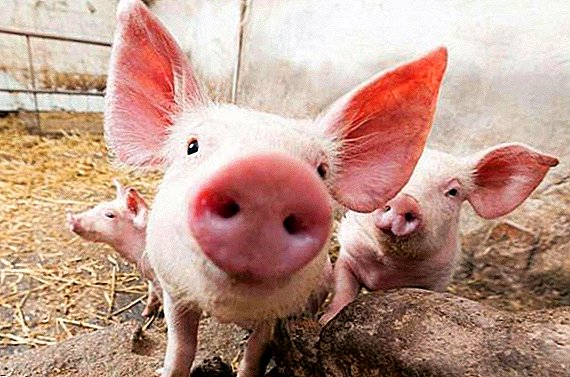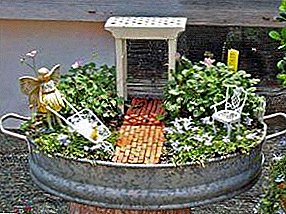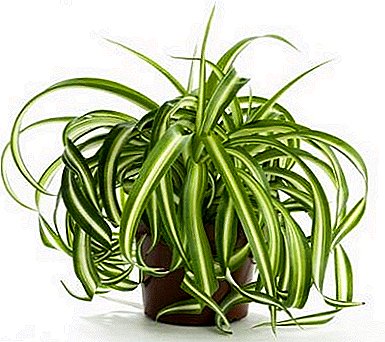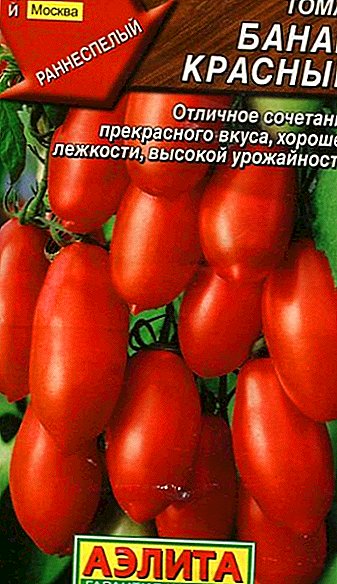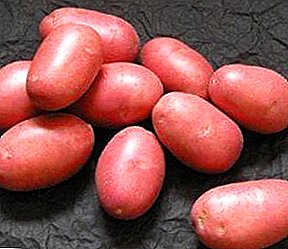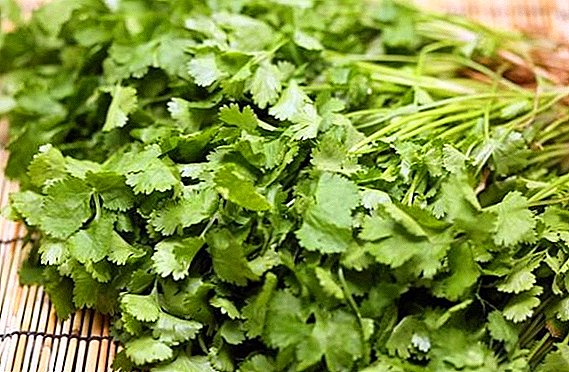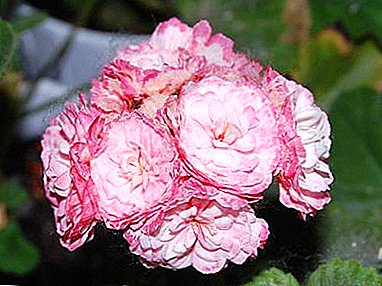
Rosebuds are a group of zonal pelargoniums. They belong to the family of Geraniyevs. A variety of Denise is the undoubted favorite, both at exhibitions and among gardeners. It is remarkable that its flowers are lush inflorescences - as if small, half-dismissed shrub roses. In the article, everyone will be able to see a photo of Deniz and learn all about the growing conditions for a plant of this variety.
Description, history and photos
Pelargonium amazes with its fragrance. Sort Denise, perhaps the best of all Rosebuds, because its many pink buds are, as it were, combined into luxurious inflorescences.
Low shrubs - only 60-80 cm, but quite powerful. If the bush is formed correctly, it looks especially impressive. It is noteworthy that in the middle of the flower the petals are lighter than the lower ones, and this contrast gives Deniz a special charm.
This flower is originally from South Africa, so it is relatively easy to tolerate a lack of moisture.
Attention! Quite often, instead of the Denise variety, some sellers try to shoot cuttings of other rosewood varieties using their external similarity. Therefore, it is reasonable to make a purchase in the nursery in order to protect yourself from fakes.
This flower is recognized by both professionals and amateurs, the most perfect of the whole family. Many call it Denis, and even more affectionately - Deniska.
Price of rooted cutting
 Pelargonium Denise is so loved by flower growers that they are ready to lay out a considerable amount of cuttings. - about eight hundred rubles.
Pelargonium Denise is so loved by flower growers that they are ready to lay out a considerable amount of cuttings. - about eight hundred rubles.
But this does not mean that you can easily buy it - it is not easy to find such a cutting.
Seeds from Holland are sold on the Internet, but they are applicable only to breeders, which make experiments on the breeding of these plants. Seeds, too, are expensive.
Plant Care Guide
The rules for planting and caring for a flower are not so complicated, but if they are not followed, then the florist will never see his flower fluffy - such is the pelargonium of Denise.
Lighting and location
The plant loves light, so it is recommended to keep the flower at home where there is a lot of sun.better on the windowsill. In summer, the flower can be taken out on the balcony or terrace, in the garden.
From direct sunlight, the plant should be shaded, in order to avoid burns of leaves and stems.
If the plant is kept outdoors during the summer, it is not necessary to obscure it. The lack of light leads to the most negative consequences:
- Bad flowering.
- Yellowing of the sheet and its fall.
Temperature conditions
Air temperature should be moderate. Optimum mode:
- summer - 20-25 degrees;
- winter - 12-15 degrees.
Too low a temperature can significantly impair the health of the plant.
Soil requirements
 For pelargonium, Denise needs a loose, nutritious soil with a neutral acid reaction. On sale there is a special soil mixture for this flower.
For pelargonium, Denise needs a loose, nutritious soil with a neutral acid reaction. On sale there is a special soil mixture for this flower.
If the florist prefers independent soil compilation, he will need:
- turf;
- humus;
- peat land;
- sand.
The first three names are taken in equal volumes - in two parts, the sand is needed one part.
Important! Soil disinfection is necessary for landing of pelargonium!
In addition, the flower also needs drainage. To do this, use:
- expanded clay;
- small pebbles;
- pebbles;
- brick battle.
Watering
Watering the plant requires regular, but not very abundant. The principle is as follows: it is better to underfill than overflow. The second option is fraught for Denise very fast rotting of the root system. Therefore, the signal for the next watering will be a noticeable drying of the upper layer of the substrate.
Spraying the flower is not necessary because it can lead to the development of rot and fungus.
Top dressing
For active flowering and health, Denise needs regular fertilizing in the form of mineral complex supplements. This event is held in the spring period as follows:
- In order to form a lush green, the soil is enriched with nitrogen.
- At the very beginning of flowering, a transition to potash-phosphate fertilizers is done - this will ensure lush flowering.
Diseases and pests
Pelargonium Denise is not very picky, but not insured against diseases and pests. Possible plant problems:
 Gray rot. A very common disease for roseus pelargonium. Symptom of the disease - gray, fluffy plaque on the leaves. The most likely cause is excessive watering and lowered air temperature. To eliminate the problem, the plant leaves the affected leaves. After that, Denise is sprayed with systemic fungicide.
Gray rot. A very common disease for roseus pelargonium. Symptom of the disease - gray, fluffy plaque on the leaves. The most likely cause is excessive watering and lowered air temperature. To eliminate the problem, the plant leaves the affected leaves. After that, Denise is sprayed with systemic fungicide.- Rust. No less common problem. On the leaves, spots appear - brown, brown. The sheet in this case is also removed and processed with a fungicide.
- White fly. The most dangerous for this plant. As for the larvae, they can be on the newly purchased flower, and to prevent an unsuccessful purchase, you need to carefully inspect the bush. Larvae or white eggs on the leaves should serve as a reason for rejection of the acquisition - it is very difficult to remove the whitefly.
- Mealybug. It is characterized by white, like wadded clusters in the axils of the foliage. Here systemic insecticides come to the rescue, and the sooner the treatment is done, the better - insects can destroy the plant.
- No flowering. The main reason for this phenomenon is too high a temperature in the room during the winter period. She, as already mentioned, should be 12-15 degrees.
Correct pruning
In order not to cause damage to the plant during these works, you need to know some simple rules:
- The first pruning should be done only after the final rooting of the pelargonium Denise.
- Use a sharp and disinfected instrument when pruning.
- Pinching should be done only on the fact of growth of young shoots - in this case, side branching is faster.
In the autumn period, after flowering, it is necessary to remove those branches that are sick, too weak or dried.
Breeding features
This process is possible only by cuttings. The problem is that the pelargonium Denise is not able to transfer the parental properties through the seeds. In other words, if you try to make a sapling from a seed of the Denise variety, you will get the most common, not rozabudnaya, pelargonium.
The path from the cutting to the finished seedling lasts about a year. If rooting occurs in the spring, the young plant can give the first color in the nearest summer.
Seasoned flower growers recommend taking a stalk between February and March, but if Denise is only one copy of the owner, then it is better to wait for the plant to fade, and take the shoot in the fall.
In the winter, this is not done, because because of the short daylight hours, the cutting cannot fully develop.
Rooting process
Rooting process is not less responsible, there are some nuances. How to do it right:
- An apical shoot is taken from the mother plant - 5-7 cm. It is necessary that there be at least three internodes on it, and at least four leaflets.
- The shank is dried, put on paper - drying lasts one to two hours.
- From the bottom of it, it is necessary to cut off all foliage and buds, if any - this will not allow the cutting to rot.
- The shoot is placed in a moist substrate, which consists of a mixture of soil, sand or perlite, deepening the cutting for one internode. A pot with a handle must be put, for example, on a windowsill - this will give both good light and heat.
Provided regular watering and normal lighting, the stalk must root within two to three weeks.
It is better to use a transparent glass made of plastic - this will allow you to visually verify that rooting has taken place.
Transfer
Pelargoniums in pots grow quickly, and therefore require transplantation pretty soon. It is better to do this in the spring, before the active development of the flower.
The flowerpot should be 2-3 cm larger than the previous one in diameter, and the soil should be fresh.
Soil composition:
- humus;
- peat;
- sand;
- turf;
- perlite.
Ratio: 2-2-1-4-1. If desired, you can buy ready-made soil.
Further:
- The plant is kept in moderately moist soil for several days. The emergence of new shoots indicates successful rooting.
- This is followed by pruning to form a shrub, in addition, it stimulates flowering. It is made with care, at the very base a young shoot is removed or the stems 5-7 cm long are left.
Watering mode - moderate, even cautious. Light should be sufficient, but without the direct rays of the sun.
Variety Denise - the most pompous flower among rosewood pelargoniums. He is characterized not only by the magnificent appearance, but also by his unpretentiousness, since it is not so difficult to grow it. Nevertheless, you need to choose the right place for him in the house and competently care for the plant, observing simple rules. Good luck breeding Deniz!


 Gray rot. A very common disease for roseus pelargonium. Symptom of the disease - gray, fluffy plaque on the leaves. The most likely cause is excessive watering and lowered air temperature. To eliminate the problem, the plant leaves the affected leaves. After that, Denise is sprayed with systemic fungicide.
Gray rot. A very common disease for roseus pelargonium. Symptom of the disease - gray, fluffy plaque on the leaves. The most likely cause is excessive watering and lowered air temperature. To eliminate the problem, the plant leaves the affected leaves. After that, Denise is sprayed with systemic fungicide.